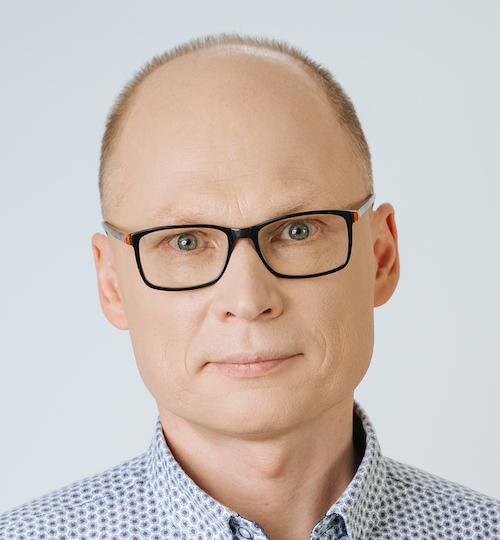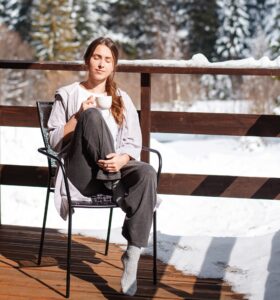Longevity has fascinated humanity for centuries. We all know the fables about the search for the water of life. Who is waiting to die? We want to live, and not just live, but live well. We want to live healthy. Take a moment to think about your current habits. Is your current lifestyle helping you reach your full potential in this earthly life?
What if you could feel younger, lighter, and mentally sharper by following a simple program that would keep your body working for as long as possible — even into your 90s, for example?
Statistics Estonia provides in its latest in a press release (04.09.2019) reported that "so far we have mostly been able to say that the life expectancy of Estonian residents and the number of years lived in good health are on an increasing trend. Based on the recently published indicators, it must be stated that we are living longer, but sicker."
However, there are regions in the world where people live on average significantly longer than we do, and without degenerative diseases.
What do they do differently?
This question fascinated American journalist and explorer Dan Buettner, who began researching the topic in collaboration with the magazine National Geographic to investigate.
Buettner writes: “To answer this question, we teamed up with National Geographic to find and study the world’s oldest people. We knew that most of the answers lay in their lifestyle and environment (previous research has shown that only 20% of lifespan is determined by genes). We then worked with a team of demographers to find the communities around the world with the highest life expectancy or the highest percentage of centenarians.”
These areas are called Blue Zones, Estonian blue zones. These are places where people live longer and healthier lives than anywhere else in the world. There are several such regions, and in all of them, 90- or even 100-year-olds are a common sight. And they don't just live longer, these people are also healthier, and without medication.
Blue zones
Dan Buettner writes: “We found five areas that met our criteria:
- The Barbagia region of the island of Sardinia in Italy – a mountainous area in central Sardinia, has the world's highest percentage of men aged 100 and over.
- Ikaria Island in Greece – an Aegean island with one of the lowest middle-aged mortality rates and the lowest dementia rates in the world.
- Nicoya Peninsula in Costa Rica – the world's lowest middle-aged mortality rate and second in the percentage of centenarian men.
- Seventh-day Adventists – The largest proportion of Adventists in the population is in Loma Linda, California. They live an average of ten years longer than their North American counterparts.
- The tropical islands of Okinawa in Japan – ranked first in the world for life expectancy for women over 70.
What is the secret of these people?
So, what is the secret to these communities' amazing longevity and health? Is it modern technology, do they consume a lot of supplements, do they run on treadmills, or do they have special genes? As you can probably guess, the answer lies in none of these.
The secret lies in their lifestyle. Simply put, their lifestyle includes healthy eating, daily physical activity, and a low-stress lifestyle that embraces family, purpose, religion, and meaning.
Dan Buettner writes: “To live to be 100, you have to win the genetic lottery. But most of us are capable of living well into our nineties, largely free of chronic disease. As Adventists have shown us, the average person’s life expectancy can increase by 10 to 12 years by adopting a blue zone lifestyle.”
Loma Linda is the only urban area out of these five. What do people in this city do differently than others around them that they live an average of ten years longer than their neighbors and are still healthy?
Lifestyle, which has brought Adventists worldwide recognition and given them longer and healthier lives than their neighbors, consists of the following principles.
8 components of a healthy lifestyle that ensure a long and healthy life
- Daily choices. As the saying goes, we are slaves to our habits. So it is vital to make sure we have more good habits and fewer bad ones.
- Regular rest that restores, heals, and renews. Regular here means quality sleep at night, one rest day each week, and a proper vacation each year.
- Being in the lap of nature, experiencing its healing and calming power. Sun, fresh air, green plants and blue skies. But just as important as regular outdoor exercise is bringing nature indoors. Your home and workplace should be designed in a way that is calming and stress-relieving.
- Activity, both intellectual and physical. When our brains and muscles don't get enough exercise, decline sets in. Inactivity is a better predictor of premature death than smoking, obesity, or high blood pressure.
- A very important part of lifestyle is faith in God. Research shows that the best health outcomes are achieved by a combination of spirituality and religiosity. This means taking part in religious activities at least once a week (the religious component) and experiencing a connection with God (the spiritual component).
- Social connectedness and strong community ties are like a safety net that helps us get through even the most difficult times. Several studies have shown that stronger social connectedness reduces the risk of cardiovascular disease and stroke.
- Our own attitude towards the world and events around us is also important. A positive and optimistic outlook on life is associated with a longer and healthier life. A pessimistic outlook on life is associated with a higher risk of depression and a higher risk of premature death.
- The last part of a healthy lifestyle is nutrition. It is not for nothing that it is said that you are what you eat. The nutrients we eat are the only building blocks that our body can use. If we use poor quality materials, we should not expect anything very permanent to be created as a result.
In conclusion
To answer the question posed at the beginning, is it possible to live to be 100 years old in good health and happiness, one might say that it is possible. People all over the world are living proof of this. Changing your lifestyle may seem daunting, but it is actually one of the cheapest and easiest ways to improve your quality of life.

Allan Randlepp
NutritionistAllan is a nutritionist and trainer whose favorite topics are lifestyle and longevity, including nutrition and physical activity.
Lifestyle training “Creation and health”





